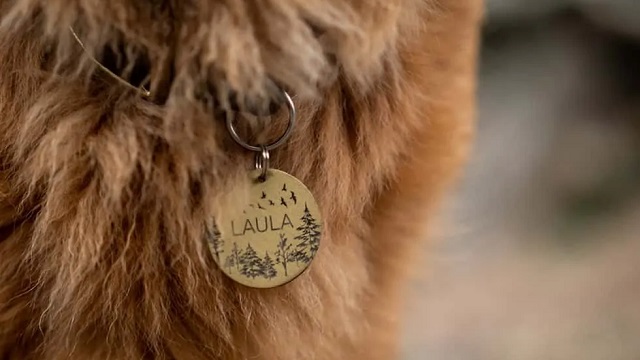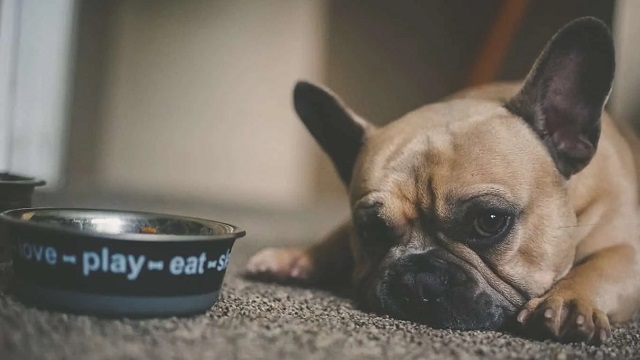Moving to a new home ranks right up there among life’s super-stressful events. This also holds true for your dog. New rooms, unfamiliar smells, a new yard, and a neighborhood of new people and pets, introducing your dog to a new home can all be very exciting — but also overwhelming. While you may have the option of chilling out with a glass of red wine or venting to a friend about your stress, your beloved dog, unfortunately, doesn’t have those options.
Here are some tips for introducing your dog to a new home!
Pack up gradually
Try your best to remain calm during the weeks that you’re packing up your home. From gathering packing materials to organizing your moving boxes, there are tons of things to get done. If you’re super-stressed, your dog will pick up on your emotions and feel uneasy as well. If you can stay organized and collected and pack up over time, your dog will feel more at ease during this transition.
Find a new vet
Your hometown vet may have recommendations for an alternative in your new town. Or, if you’re relocating to a new city, like New York, for work, check with your new employer. Their HR department may have referral services. If your chosen vet’s office isn’t open 24/7, also find an emergency vet in your new area who’s available at all hours. Add the vet’s phone number and address to your phone, and learn how to find your way there.
Get new collar tags before you move

You should also get a new ID tag for your dog, and put it on before you move; many dogs get anxious and may try to run away in the first days in a new home. With many new smells and sounds, if your dog does run away during the first few days at your new home they may have less of an idea of where to come back to, which is why having these news tags is so important.
Check the house for pet hazards
Before you move in, carefully scan the house for potential pet hazards. Look high and low. Stoop down to your dog’s level to look for hazards on the floor, and also look to levels where your dog may be able to climb or jump. Even if your dog isn’t a climber, a new environment may cause stress and lead to unusual behavior.
Be especially careful to look for:
⦁ Possible poisons: Household cleaners, antifreeze, paint, pesticides, medications (prescription and over-the-counter, including vitamins), and houseplants. Medications are by far the leading cause of calls to the ⦁ Animal Poison Control Center.
⦁ Choking hazards: Give your house a clean sweep before moving in and look for buttons, needles, Legos and other tiny toys or game pieces that may have been left on the floor. Make sure window blinds and shades are well out of reach.
⦁ Electrical or heat sources: Small appliances, furnaces, fireplaces, and electrical cords.
⦁ Escape routes: Make sure fences and gates are closed and look for loose or missing window screens.
Make the introduction fun
If at all possible, place your dog’s bed and toys, as well as their water and food dishes, in your new home before arriving. This will let the dog know that this is their space now and it will be comforting to have familiar items and smells. When you first arrive with your dog at the new home, take them to the backyard to relieve themself in the area you prefer. Showing your dog where the proper place to use the bathroom is located. Next, walk through the house and let your dog sniff around to their heart’s content. Try not to leave them alone during the first day in the new home, they may be nervous and you are what they are most familiar with.
Keep old routines consistent

Make each day’s routine consistent. Many people want to get all new stuff after a move, but it is advised to use your dog’s familiar leash, dog dish, food, and bed to help them feel more at home. Also, keep the rules the same. Don’t change the rules just because you feel bad that your dog is having to adjust to your new home. The more secure your dog feels, the smoother the transition will be. If your dog is anxious, using a crate can be a good option to help minimize anxiety.
Be patient
Be patient and let your dog adjust on his or her own time. Some dogs will be perfectly comfortable within a few days, but others may take a few weeks or months to finally feel at home and settle in. No matter how long it takes your dog to adjust, your patience is more likely to speed up the process and make your dog feel more comfortable.
Bring your dog along to meet your neighbors
When you begin to explore the new neighborhood and meet your neighbors you should bring your dog with you. They’ll begin to familiarize themselves with the new area and smells as well as what the surrounding area of your home is like. You can also find out which neighbors have friendly dogs that may want to meet yours. And, if your dogs hit it off, book a date for the nearest dog park!
Watch for territorial or unexpected behavior
After introducing your dog to your new home, some dogs may bark incessantly, become destructive, or become extra protective over you and your family. It is important to get these new behaviors figured out sooner rather than later. Don’t hesitate to contact your veterinarian for advice, or even a trainer or dog behaviorist if needed.
Shower your dog with love

As hectic as the move is, be sure to take the time to shower your dog with lots and lots of extra love and attention. Spending some quality one-on-one time will help make you both feel better, and show your dog that this new home is a happy and safe place.
Originally Published on Redfin by Lexi Klinkenberg.






